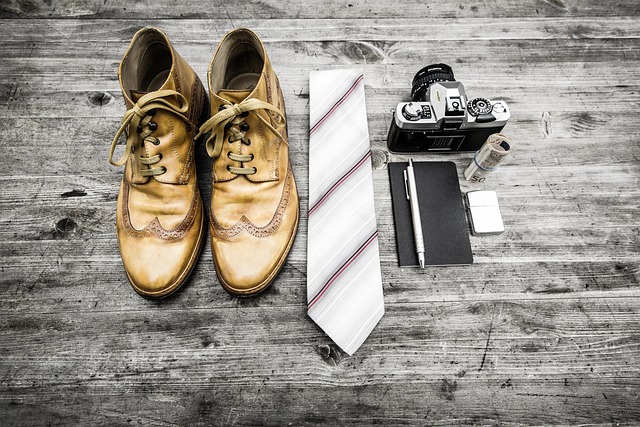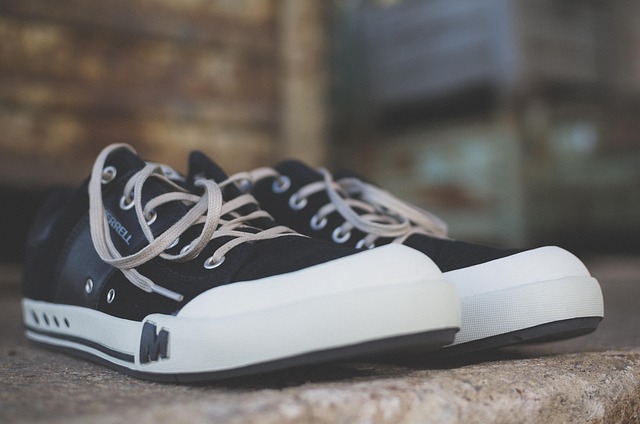1920s to mid-20th century vintage-era footwear encapsulates the fashion and craftsmanship of its time, serving as a tangible link to history with unique design elements that have remained relevant. These shoes, often made with premium leathers and intricate embellishments, offer a glimpse into past cultural intricacies and societal changes, from the playful 'cloche' heels of the 1920s to the comfortable wartime styles, and the return of feminine silhouettes in the '50s. Vintage-era footwear not only represents a bygone era's aesthetic charm but also its cultural significance, with a legacy of handcraftsmanship that prioritizes durability over disposability. Today, they are cherished for their enduring quality and craftsmanship, aligning with modern values of sustainability and skillful production, making them an essential element in the contemporary fashion landscape that values both heritage and environmental responsibility.
Step back into time with the enduring allure of vintage-era footwear, an accessory that transcends fleeting trends and embodies timeless style. This article delves into the multifaceted world of classic shoes, exploring their evolution, craftsmanship, and historical significance. From the elegance they exude to their impact on modern fashion, vintage-era footwear offers a unique blend of comfort, sustainability, and cultural expression. Join us as we traverse the rich history and practical advantages of these timeless treasures, and learn how incorporating them into your wardrobe can elevate your ensemble with an air of sophistication and nostalgia.
- Unveiling the Timeless Elegance of Vintage-Era Footwear
- The Evolution of Style: A Glimpse into Vintage Shoe Designs
- Craftsmanship and Quality: The Hallmarks of Classic Footwear
Unveiling the Timeless Elegance of Vintage-Era Footwear

Vintage-era footwear offers a captivating glimpse into the fashion and craftsmanship of bygone eras, showcasing design elements that have withstood the test of time. These artifacts of sartorial history are not mere accessories but are imbued with the era’s ethos and cultural nuances, often featuring meticulous handcrafting techniques that modern footwear has largely moved away from. From the art deco motifs of the 1920s to the opulent silhouettes of the 1950s, each period’s vintage-era footwear reflects a unique moment in history, offering wearers today a chance to don a piece of historical heritage. The allure of these timeless pieces lies not only in their aesthetic appeal but also in their quality and durability, which is a stark contrast to the disposable nature of much contemporary fashion. Collectors and enthusiasts alike appreciate the rich tapestry of materials and textures—from fine leathers to ornate embellishments—that characterize these enduring designs, making vintage-era footwear an integral part of any discerning wardrobe.
The Evolution of Style: A Glimpse into Vintage Shoe Designs

Vintage-era footwear represents a rich chronicle of fashion and societal evolution, offering a unique perspective on historical periods through their design elements. As we explore the evolution of style within vintage shoe designs, one observes a tapestry of influence from the practical to the extravagant. From the turn of the 20th century to the mid-century era, shoes have transitioned from functional items primarily concerned with support and durability to expressions of personal taste, cultural identity, and artistic creativity. Early designs often featured sturdy materials like leather and canvas, with closed-toe styles dominating for both men and women. The Roaring Twenties introduced a playful edge, with higher heels and the advent of the ‘cloche’ heel, named for its resemblance to the bell-shaped hats of the era. The subsequent decades saw a proliferation of styles catering to various occasions, from the ornate Art Deco influences of the 1920s to the demure and comfortable designs necessitated by World War II. Each era brought forth new shapes, materials, and embellishments, reflecting contemporary fashion trends and technological advancements in footwear manufacturing. The 1950s introduced a return to femininity with pointed toes and kitten heels, while the 1960s and 1970s saw a revolution in materials with the introduction of synthetic fabrics, leading to the creation of iconic go-go boots that became synonymous with the era. Vintage-era footwear thus stands as a testament to the changing times, offering contemporary enthusiasts not only a stylish addition to their wardrobe but also a tangible connection to the past. Collectors and fashion aficionados alike appreciate these artifacts for their historical significance and enduring aesthetic appeal.
Craftsmanship and Quality: The Hallmarks of Classic Footwear

Vintage-era footwear stands as a testament to a bygone era’s craftsmanship and quality, a legacy that continues to resonate in contemporary times. The construction of these timeless shoes often involved meticulous handcrafting techniques, with each stitch and material selection reflecting the artisan’s skill and dedication to excellence. The durability of vintage-era footwear is a hallmark of its quality; designs from this period were built to last, frequently featuring robust leathers and soles that endure the test of time. This resilience not only speaks to the longevity of the shoes but also to their relevance across generations. The attention to detail in vintage-era footwear is unparalleled, with design elements often revealing a deeper understanding of ergonomics and comfort, ensuring that these pieces remain both functional and stylish. Collectors and enthusiasts prize such footwear for its ability to seamlessly transition from historical artifacts to modern fashion statements, making it an invaluable addition to any wardrobe. The allure of vintage-era footwear lies not only in its aesthetic appeal but also in the story it tells of a time when quality was not just a standard, but a given. Today, as sustainability and quality craftsmanship become increasingly important, vintage-era footwear offers a compelling narrative of both timeless fashion and enduring quality.
In conclusion, vintage-era footwear stands as a testament to the enduring legacy of craftsmanship and design innovation. From the ornate embellishments of the past to the comfort and durability that define these timeless pieces, the evolution of shoe styles offers a fascinating glimpse into history. Collectors and enthusiasts alike appreciate the unique charm and quality inherent in vintage-era footwear, which not only adds a distinctive flair to modern wardrobes but also serves as a reminder of fashion’s rich tapestry through the ages. As we continue to explore and embrace these classic designs, it becomes clear that their importance transcends mere aesthetics; they are a cultural heritage that enriches our understanding and appreciation of both fashion history and the art of shoemaking.
